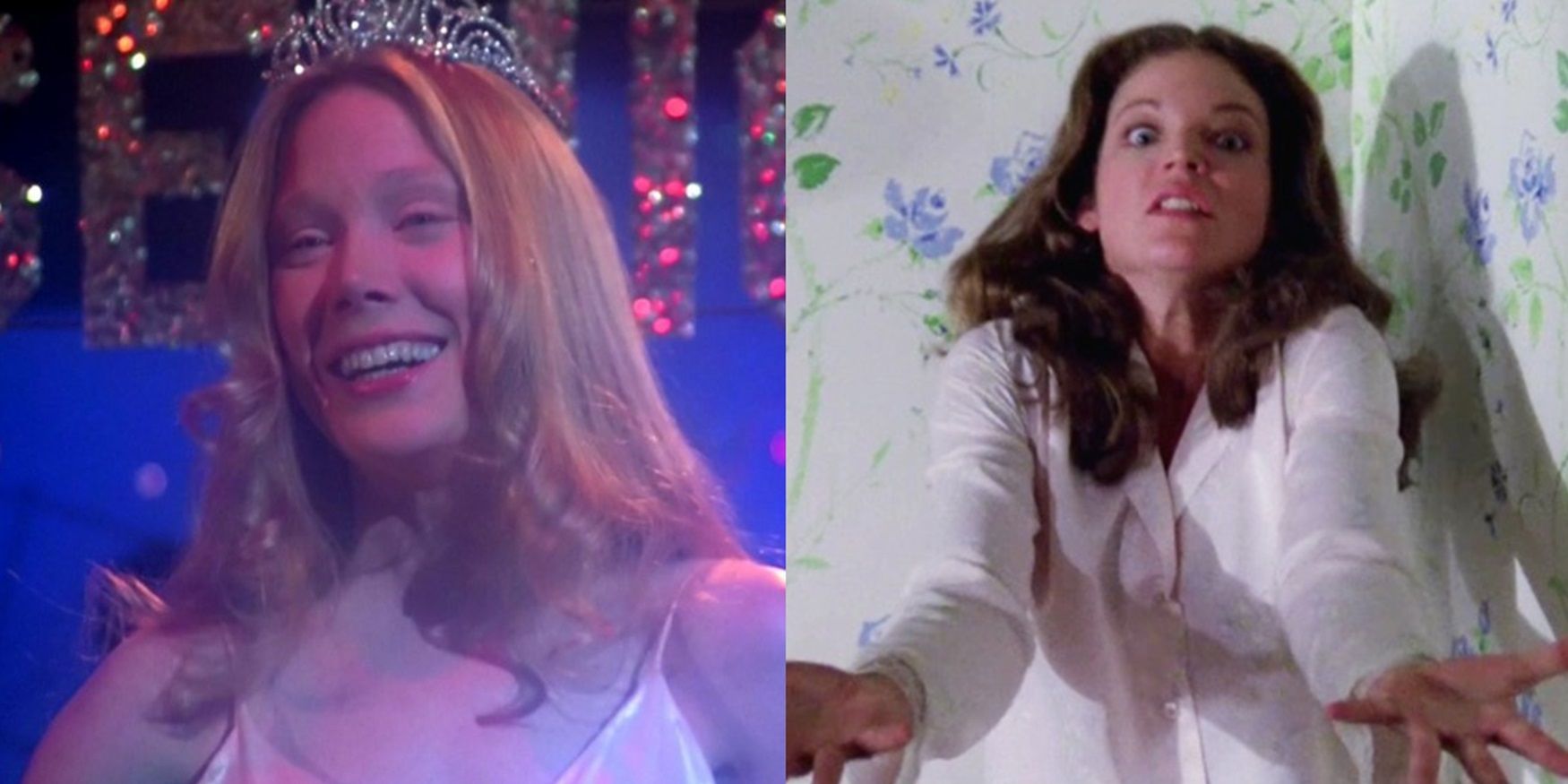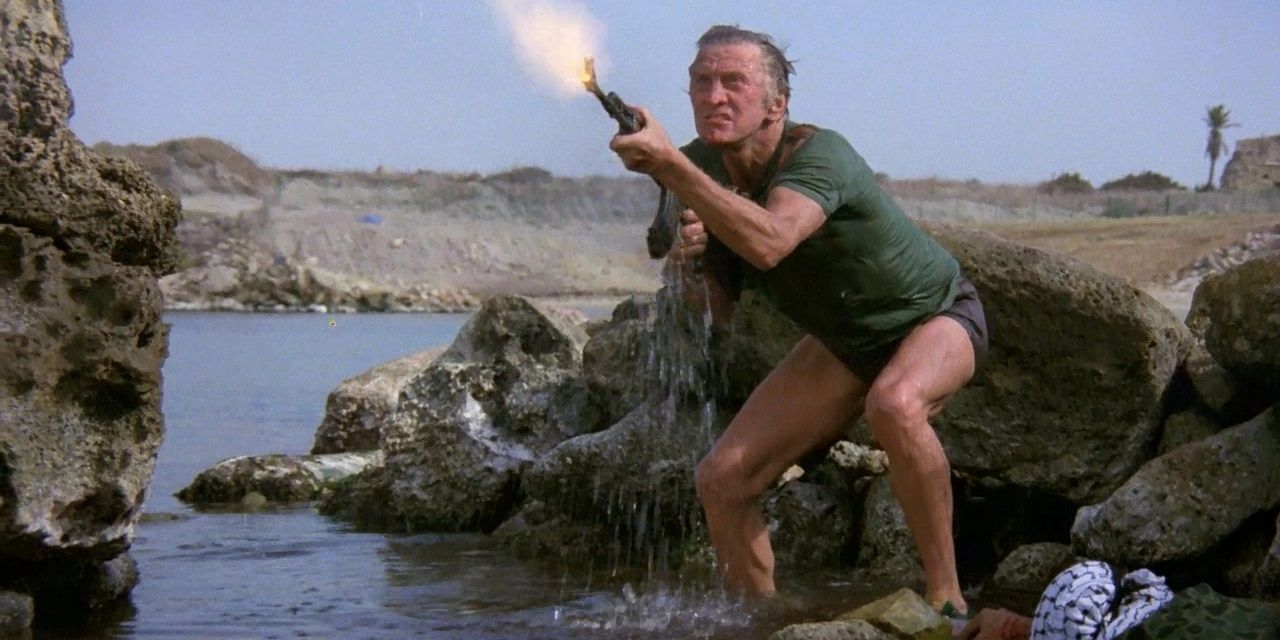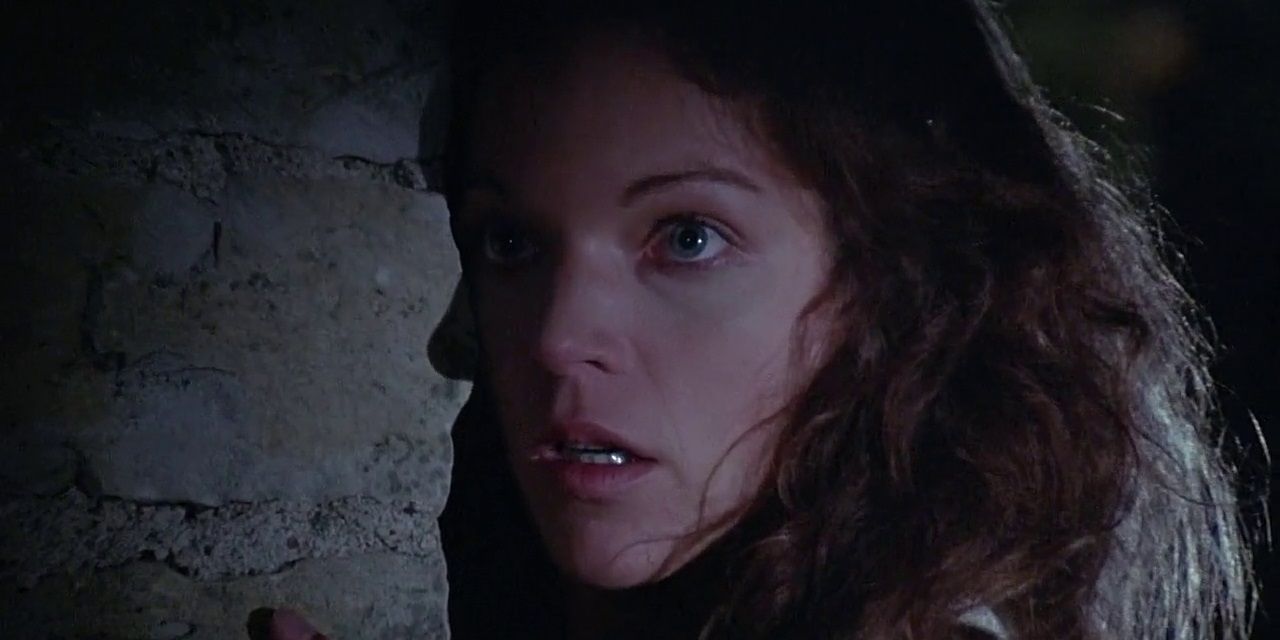After turning Stephen King’s debut novel Carrie into one of the most iconic horror movies ever made, Brian De Palma turned John Farris’ The Fury into an equally riveting supernatural chiller. The first of more than 100 screen adaptations of King’s work, Carrie was the movie that put De Palma on the map. Some of his earlier films, like Sisters and Phantom of the Paradise, would go on to become cult classics, but Carrie was an instant success with both critics and audiences. The only downside of making a universally adored movie is the pressure of starting from scratch to follow it up with something new. De Palma followed up Carrie with an adaptation of a different tale of telepathy from a different thriller novelist.
Although it bears Farris’ name in the byline, The Fury could easily be a Stephen King story. Kirk Douglas stars as an ex-CIA badass who teams up with a teenage psychic to liberate his telekinetic son from the terrorists who want to use his power for evil. This pulpy sci-fi thriller premise could’ve easily belonged to a King novel. The Fury has the telekinetic teen protagonist of Carrie, the men-in-black paranoia of Firestarter, the curse of clairvoyance from The Dead Zone, and the race-against-time adventure of 11/22/63.
Whereas Carrie was scripted by Lawrence D. Cohen, retooling King’s epistolary bestseller into a visual narrative, The Fury was adapted for the screen by its own author. Farris’ script cuts right to the chase, opening in the Middle East with ex-CIA operative Peter Sandza narrowly escaping death in the midst of a terrorist attack staged to abduct his telekinetic son, Robin. After her supporting turn as remorseful high school bully Sue Snell in Carrie, De Palma promoted Amy Irving to a lead role in The Fury. Irving plays Gillian Bellaver, the clairvoyant Chicago teen that Peter teams up with to save Robin. Douglas and Irving both give terrific performances as a pair of captivating protagonists who are easy to root for, opposite John Cassavetes as Ben Childress, Peter’s colleague-turned-mortal enemy.
De Palma can never resist an opportunity to homage Hitchcock. Body Double revolves around a voyeur spying on his neighbors like Rear Window, Dressed to Kill kills off its A-list star at the midpoint like Psycho, and De Palma included sinister shower scenes in both of those movies, as well as Carrie, Blow Out, and Phantom of the Paradise. In The Fury, De Palma uses a sequence set in an indoor amusement park to recreate the climax of Strangers on a Train with a paranormal twist. In this version, the antihero pushed to his breaking point uses his mind to unscrew the bolts holding together a fairground ride.
Both Carrie and The Fury have great music. Pino Donaggio’s Carrie score duplicates Bernard Herrmann’s piercing violin strings from Psycho (another Hitchcock reference) every time Carrie uses her telekinetic powers. The music for The Fury was composed by none other than John Williams. After being Oscar-nominated for Star Wars and Close Encounters of the Third Kind at the same ceremony (winning for the former), Williams had as much of a burden to follow up the best work of his career as De Palma did after Carrie. In her book When the Lights Go Down, renowned critic Pauline Kael lauded Williams’ Fury music, calling his work on the film “as apt and delicately varied a score as any horror movie has ever had.” In the same year that he provided the mesmerizing orchestrations in The Fury, Williams also scored Superman and Jaws 2.
With the explosion of John Cassavetes, The Fury culminates in an even bigger and bloodier climactic sequence than Carrie. As Gillian uses her powers to blow up Childress, blood and guts fly in every different direction and his severed head soars up into the lens of an overhead camera. This shocking moment of body horror is seen from a dozen different angles before crashing into the end credits. The death of Childress is one of the most glorious final shots in cinema history, paired with a Williams track that’s just as triumphant as his score for the destruction of the Death Star.
When a filmmaker releases an untouchable masterpiece like Carrie, following it up with a satisfactory successor is a near-impossible feat. Directors usually follow up a groundbreaking opus with a more intimate story on a smaller scale. Francis Ford Coppola followed up The Godfather with The Conversation; Quentin Tarantino followed up Pulp Fiction with Jackie Brown. De Palma faced the challenge of following up Carrie, still frequently listed alongside the greatest and most influential horror films ever made, by going the other way. He went back to the psychic subject matter with a larger scale, a bigger ensemble, and a more action-packed narrative.
The Fury isn’t quite as technically masterful or emotionally resonant as De Palma’s heart-wrenching Stephen King adaptation, but it’s just as much fun. Like Carrie, The Fury is full of unexpected twists and turns, genuine frights and thrills, and memorable performances by perfectly cast actors. It’s a must-see horror gem, not just for De Palma fans, but for supernatural thriller fans in general. The Fury will make the wait for the next season of Stranger Things a little easier.



